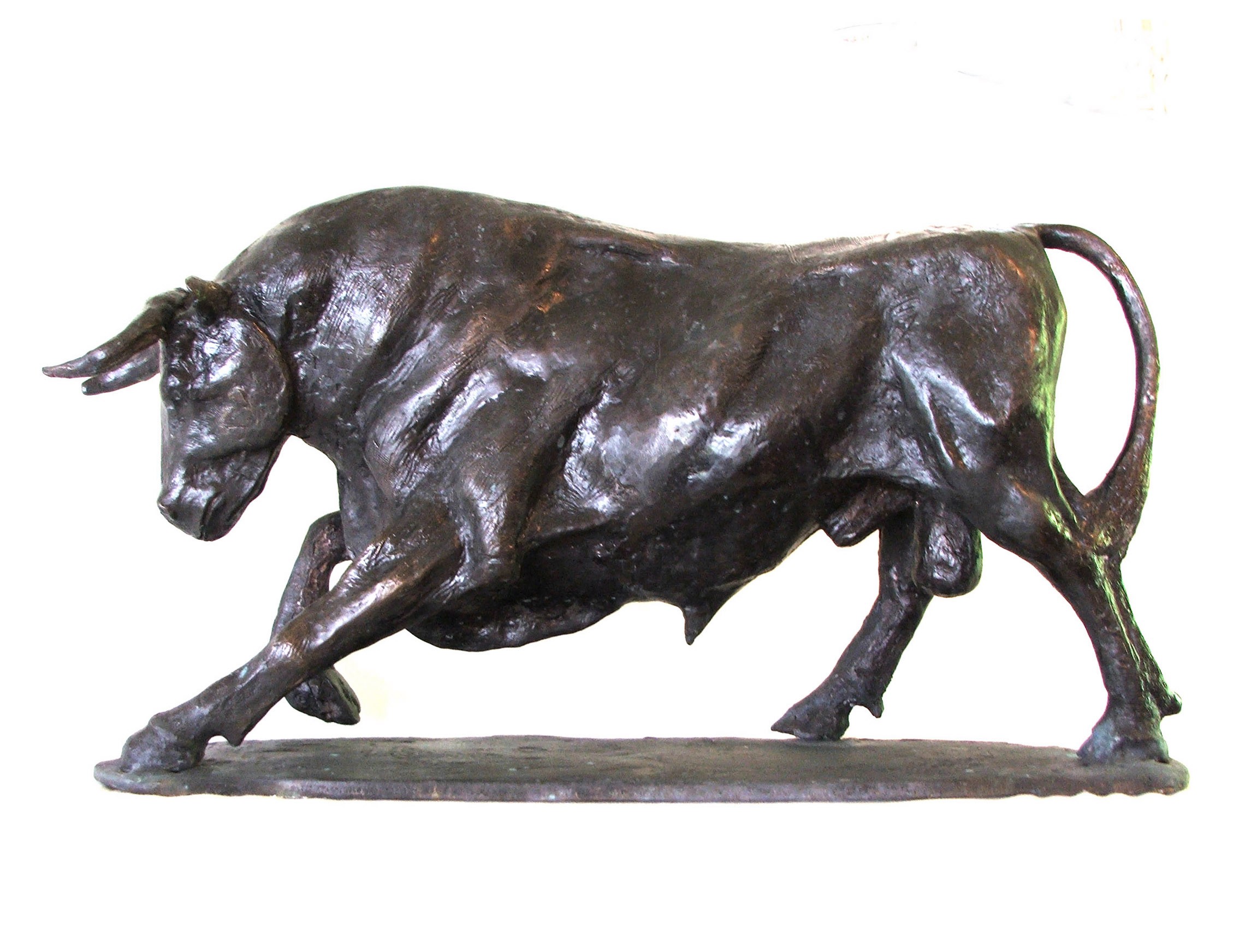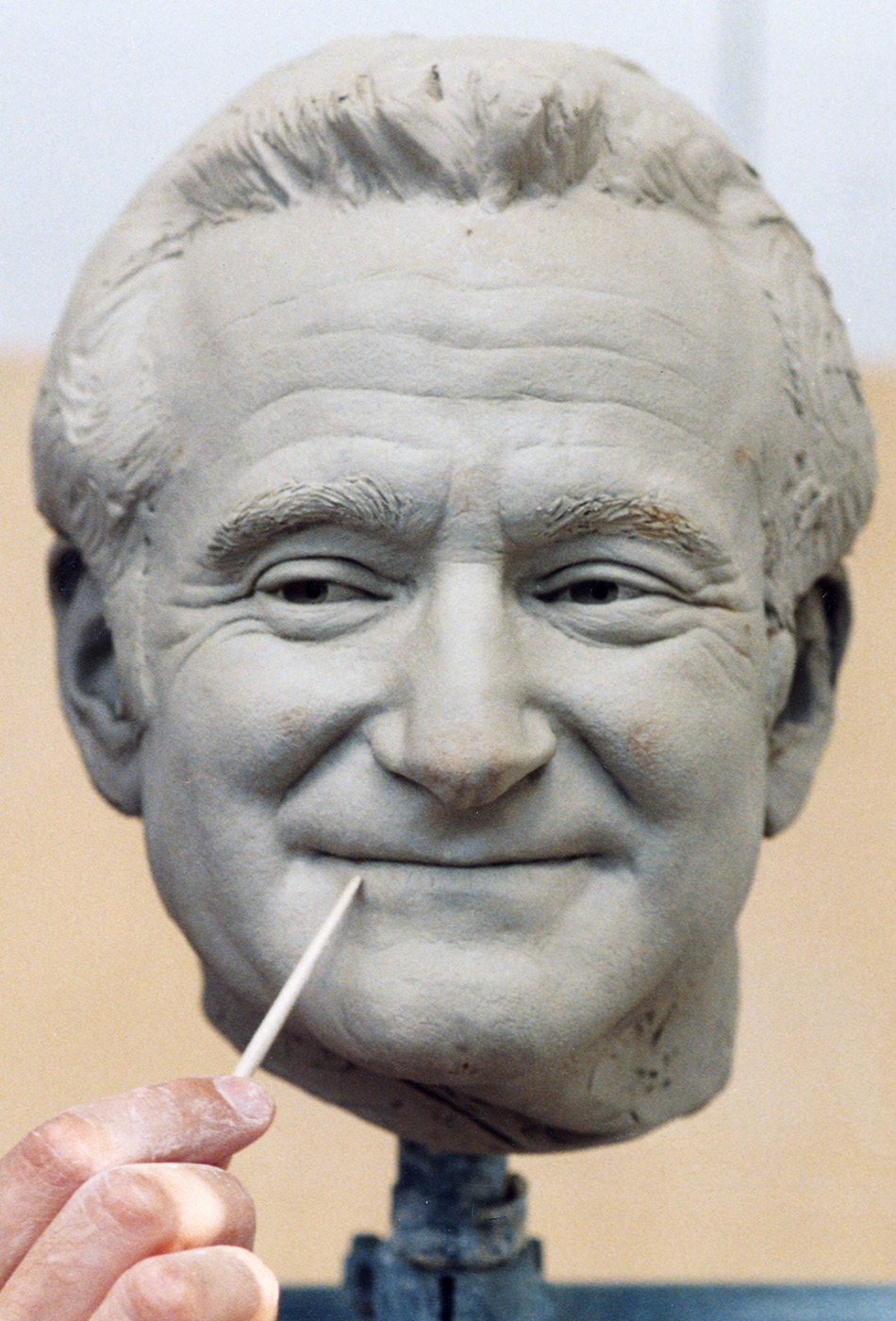Grace moving: Discover the Elegance of Equine Sculptures
Wiki Article
The Development of Sculptures: From Ancient to Modern
The Advancement of Sculptures: From Ancient to Modern.Sculpture, one of the oldest forms of art, has actually been an integral component of human civilization for millennia (Robert C Hitchcock Sculptor). From the old human beings of Egypt and Greece to the contemporary age, sculptures have actually evolved, showing modifications in creative methods, products, and social impacts. This trip through time traces the development of sculptures, checking out the changes in vogue, topic, and creative expression
Starting with the ancient world, sculptures crafted from stone and later bronze recorded the essence of deities, rulers, and day-to-day life. The Renaissance period saw a revival of classical sculpting strategies, as artists sought to replicate the graceful types of ancient Greek and Roman sculptures. In the contemporary age, artists challenged typical boundaries, welcoming abstraction and experimentation with new products.

This exploration will certainly look into the diverse evolution of sculptures, exposing the abundant tapestry of imaginative expression throughout different periods and societies.
Ancient Sculptures: From Rock to Bronze
Old sculptures transitioned from being sculpted out of rock to being cast in bronze. Rock sculptures, while outstanding in their own right, were restricted by the nature of the product.The intro of bronze as a medium for sculptures caused a revolution in creative expression. Bronze supplied carvers the chance to produce elaborate and realistic types that were not possible with rock. The process of casting bronze permitted the creation of several duplicates of a sculpture, allowing broader distribution and preservation of these imaginative masterpieces.
The transition from rock to bronze also saw a change in the subject matter of sculptures. While rock sculptures mostly portrayed gods, goddesses, and mythical figures, bronze sculptures started to mirror a broader variety of subjects, including day-to-day individuals and animals. This growth of subject showcased the convenience and adaptability of the bronze tool.
Renaissance Resurgence: Sculpting in the Classical Design
The Renaissance revival of sculpture witnessed a renewal in the timeless style, structure upon the innovations made during the change from rock to bronze in ancient sculptures. During this period, artists looked for to recreate the classic visual and suitables of elegance that were common in ancient Greek and Roman sculptures.Among the key qualities of the Renaissance revival was the focus on naturalism and the human form. Sculptors like Donatello and Michelangelo strove to capture the physiological details and expressions of their subjects with unmatched precision. They studied the human body and incorporated their monitorings right into their sculptures, leading to reasonable and realistic depictions.
An additional vital element of the Renaissance resurgence was the exploration of viewpoint and deepness. Artists made use of methods such as contrapposto, where the weight of the body is shifted to one side, producing a sense of motion and dynamism. They likewise explore different materials, consisting of marble and bronze, to achieve a level of refinement and ins and out in their sculptures.
The timeless style of the Renaissance rebirth had an extensive impact on later periods of art, offering as a foundation for the advancement of Western sculpture. It brought a renewed appreciation for the elegance and majesty of the human form, and its legacy can still be seen in contemporary sculptures today.
Innovation and the Avant-Garde: Breaking Standard Borders

Among the crucial features of modernist sculpture was the focus on abstraction. Sculptors relocated far from sensible representations and rather concentrated on catching the essence of the subject through streamlined kinds and geometric shapes. This separation from traditional representation enabled artists to share their feelings and concepts in an extra individual and subjective way.
Additionally, the avant-garde motion challenged societal standards and conventions, urging artists to experiment and press the boundaries of their art - Portrait Sculptor. Artists began incorporating non-traditional materials such as discovered items, commercial products, and also natural elements into their job. This expedition of new products and techniques not only increased the possibilities for sculpture but likewise tested the conventional concepts of what might be taken into consideration art
Contemporary Sculptures: Discovering New Materials and Concepts
With a concentrate on exploring new materials and principles, modern sculptures have transformed the area of art. Artists today are pushing the boundaries of standard sculpture by trying out and making use of innovative products with abstract principles. These sculptures challenge traditional concepts of meaning, materiality, and form, welcoming audiences to involve in a brand-new and provocative artistic experience.Contemporary artists are accepting a large range of products, including plastic, glass, steel, and also natural matter. Equine Sculptures. They are not limited to the standard tool of stone or clay, allowing for higher freedom of speech and trial and error. This shift towards non-traditional materials has actually opened up brand-new opportunities for artists to produce sculptures that are vibrant, interactive, and visually striking
In addition to checking out new products, contemporary sculptures also delve right into facility and abstract principles. Artists are now exploring themes such as identification, social problems, and the setting, making use of sculpture as an effective tool for social discourse and introspection. These sculptures challenge customers to believe seriously and involve with art on a much deeper degree, triggering discussions and provoking emotional feedbacks.
International Impacts: Sculptural Customs From Around the Globe

In old Egypt, sculptures were created primarily for funerary and spiritual purposes. The famous sculptures of pharaohs and gods, such as the Great Sphinx and the bust of Queen Nefertiti, display the Egyptians' proficiency of stone sculpting and their belief in the immortality.
In old Greece, sculpture reached its height throughout the classic duration. Influenced by the perfects of beauty, harmony, and proportion, Greek sculptures emphasized the human type and celebrated the success of professional athletes, heroes, and gods. The renowned sculptures of Aphrodite of Knidos and the Discobolus exemplify the Greeks' pursuit of excellence in sculptural art.
In ancient Rome, sculpture offered both imaginative and political functions. Bronze Sculptures. Roman sculptures frequently depicted emperors, generals, and mythological numbers, reflecting the power and splendour of the realm. The marble statuary of Augustus of Prima Porta and the huge Arch of Constantine are remarkable examples of Roman sculptural accomplishments
Asian sculptural customs, particularly in India, China, and Japan, have additionally had a profound influence on the development of sculptures. Indian sculptures, such as the delicately sculpted temples of Khajuraho and the enormous sculptures of Buddha, display an abundant combination of spiritual, mythical, and building elements. Chinese sculptures, identified by their fine craftsmanship and interest to information, commonly portray deities, pets, and epic numbers. Japanese sculptures, affected by Buddhism, emphasize simpleness and peace, seen in the peaceful statues of Buddha and the stylish art of bonsai.
The global impacts on sculpture proceed to progress in the modern-day period. Musicians today draw motivation from different sculptural customs, integrating new materials, techniques, and principles to create cutting-edge and provocative artworks. The blend of various cultural impacts has triggered a vibrant and varied sculptural landscape, mirroring the interconnectedness of our worldwide culture. As we look to the future, it is certain that the global influences on sculpture will certainly remain to shape and redefine this ancient art form.
Verdict
In verdict, the advancement of sculptures has seen a change from old rock and bronze works to the classical resurgence throughout the Renaissance. This was followed by the breaking of traditional borders via modernism and the progressive activity. Today, contemporary sculptures explore new products and ideas, while additionally drawing inspiration from global sculptural traditions. The journey of sculptures reflects the ever-changing imaginative expressions and cultural influences throughout history.From the ancient worlds of Egypt and Greece to the contemporary era, sculptures have actually developed, mirroring modifications in artistic techniques, products, and cultural impacts.Starting with the old globe, sculptures crafted from rock and later on bronze caught the significance of divine beings, leaders, and day-to-day life.Ancient sculptures transitioned from being sculpted out of rock to being cast in bronze. While rock sculptures predominantly shown gods, goddesses, and mythological figures, bronze sculptures began to show a broader range of topics, consisting of day-to-day individuals and animals.In verdict, the advancement of sculptures has seen a shift from old rock and bronze functions to the classic rebirth throughout the Renaissance.
Report this wiki page